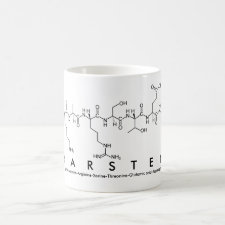
Authors: Ton XA, Acha V, Haupt K, Tse Sum Bui B
Article Title: Direct fluorimetric sensing of UV-excited analytes in biological and environmental samples using molecularly imprinted polymer nanoparticles and fluorescence polarization.
Publication date: 2012
Journal: Biosensors and Bioelectronics
Volume: 36
Issue: (1)
Page numbers: 22-28.
DOI: 10.1016/j.bios.2012.03.033
Alternative URL: http://www.sciencedirect.com/science/article/pii/S0956566312002035
Abstract: A rapid, robust, sensitive and economic sensing method, based on a molecularly imprinted polymer (MIP) synthetic antibody mimic, and fluorescence polarization analysis, for the direct detection of UV-excited fluorescent analytes in food and environmental samples was developed. Fluoroquinolone (FQ) antibiotics were used as fluorescent model analytes. Water-compatible MIP nanoparticles were synthesized with enrofloxacin (ENRO) as the imprinting template. Fluorescence polarization measurements then allow the direct determination of the amount of ENRO and other structurally related piperazine-based fluoroquinolones that bind to the MIP. No separation step was required since this technique distinguishes in situ analyte molecules bound to the MIP from the free analyte in solution. This assay was successfully applied for the first time to determine FQs in real samples, i.e. tap water and milk, without any prior concentration step, by simply adding a known amount of MIP. No interference by the sample components was observed even though the excitation was in the UV region. In tap water, a low limit of detection of 0.1 nM for ENRO was achieved with 5 μg mL-1 of MIP. In milk, ENRO and danofloxacin, whose MRLs have been fixed at 0.28 μM and 0.08 μM, respectively, could be selectively measured and distinguished from other families of antibiotics. The procedure is very easy and practical as it consists of simply precipitating the milk proteins with acetonitrile and adding buffer and MIP to the supernatant before reading the polarization values with a spectrofluorimeter
Template and target information: enrofloxacin, ENRO, danofloxacin, fluoroquinoloine antibiotics, FQ
Author keywords: molecularly imprinted polymer, Fluoroquinolones, Biosensing, milk, fluorescence polarization, biomimicry



Join the Society for Molecular Imprinting

New items RSS feed
Sign-up for e-mail updates:
Choose between receiving an occasional newsletter or more frequent e-mail alerts.
Click here to go to the sign-up page.
Is your name elemental or peptidic? Enter your name and find out by clicking either of the buttons below!
Other products you may like:
 MIPdatabase
MIPdatabase









